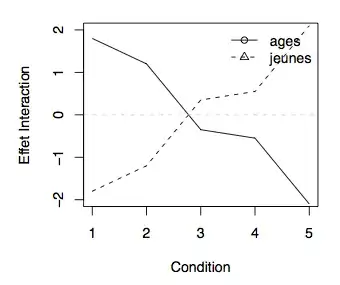In a simple experiment I asked participants to make acceptability judgements (9-point Likert scale) when they observed different animated virtual characters. I have two factors: character (7 levels) and motion (5 levels).
Two-way ANOVA showed significant interaction between the above factors, so I want to explore this interaction better. I've run a post-hoc Tukey test and looked at critical differences between mean acceptability ratings for all characters, and all levels of motion. It's a large matrix (rough example can be seen in this post in stackoverflow) that might not be entirely clear for the interpretation. It's been suggested to me that maybe I could have visualize or statistically explore this interaction between characters and motion better.
Any suggestions how I could do that (preferably in R)?
